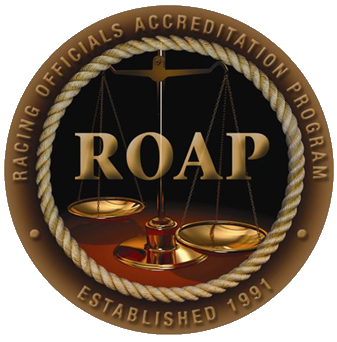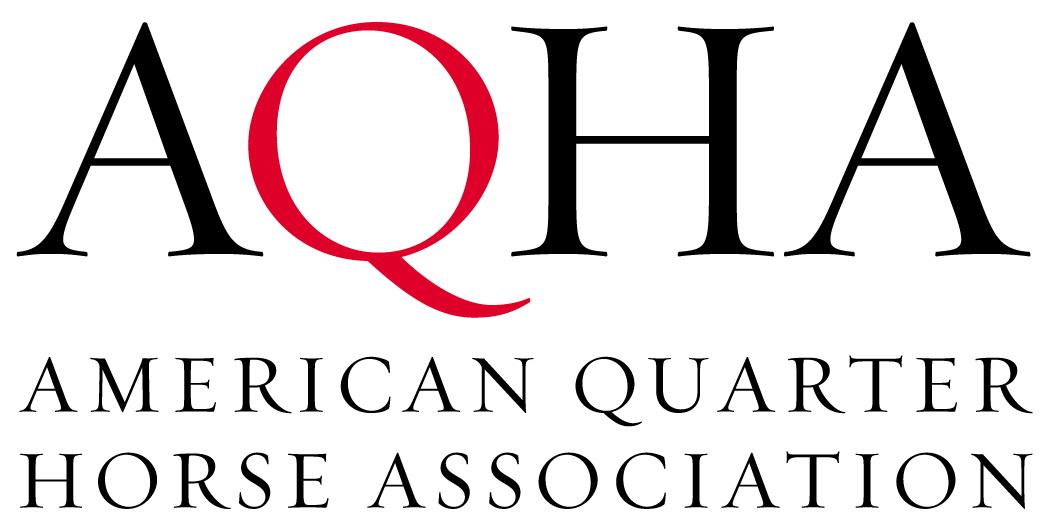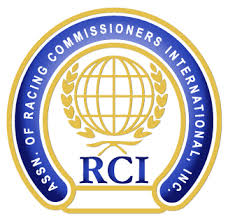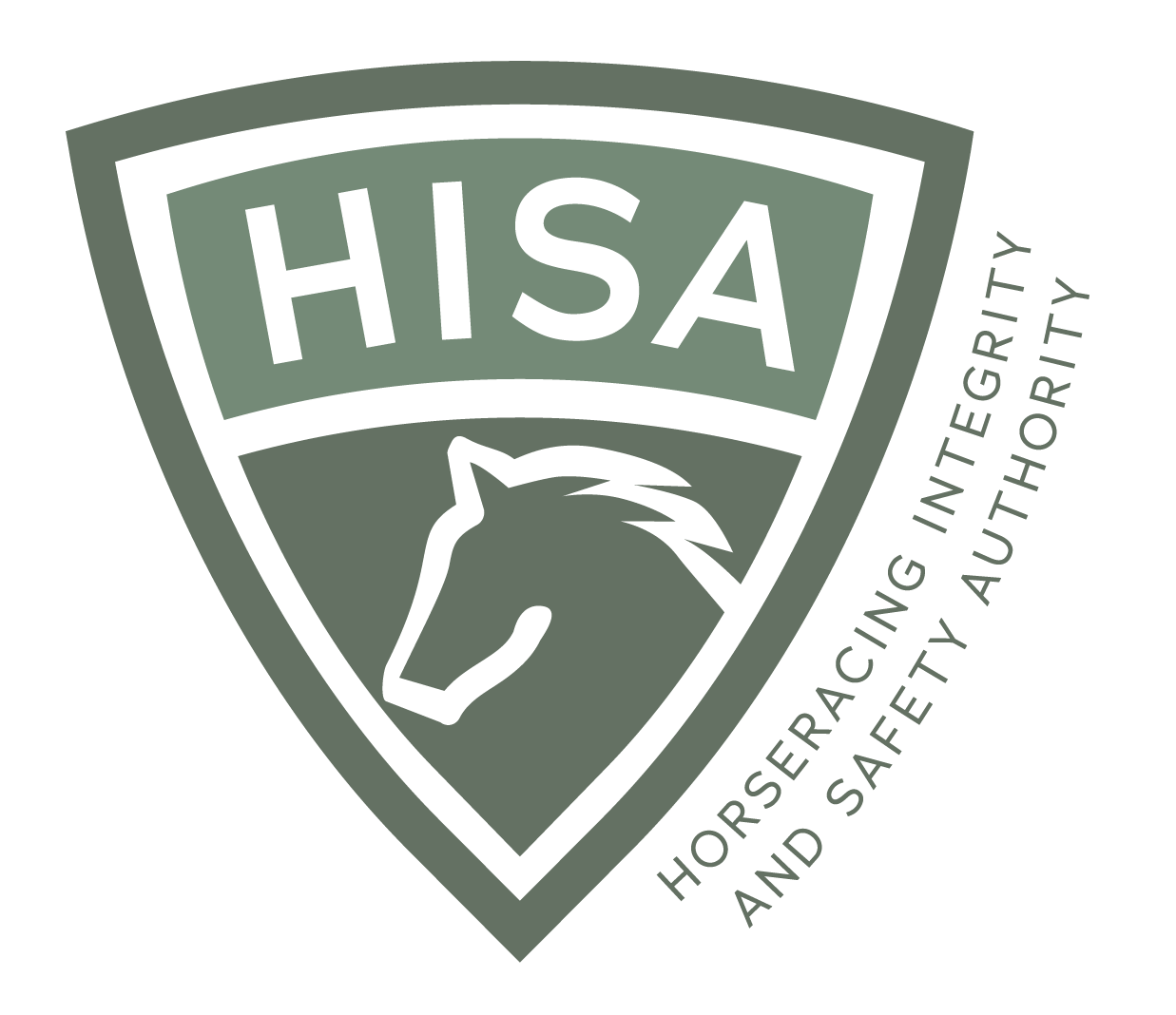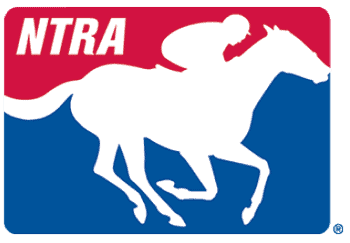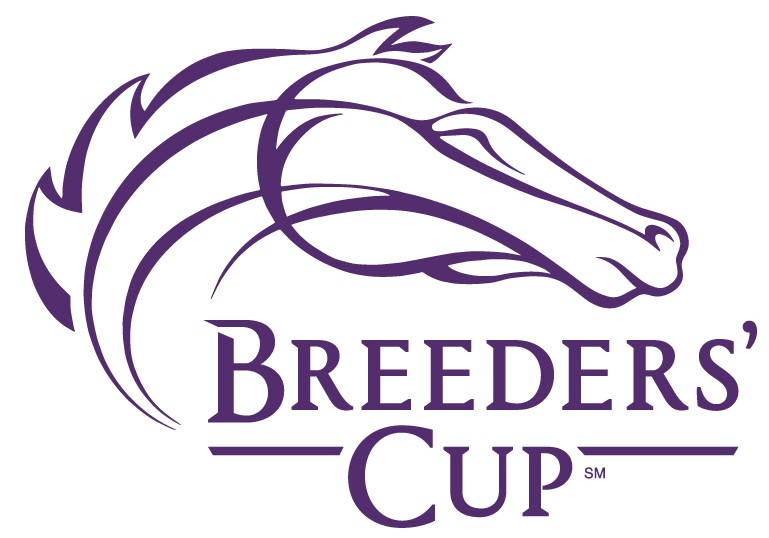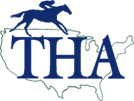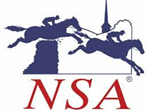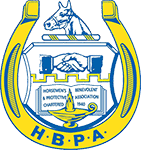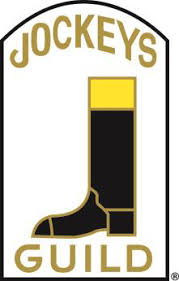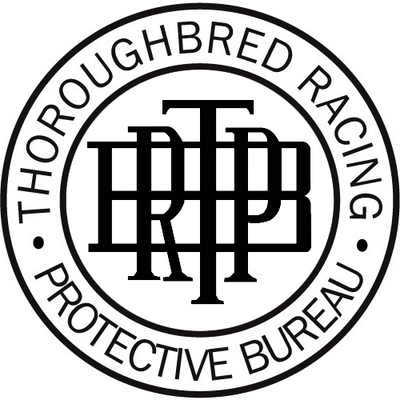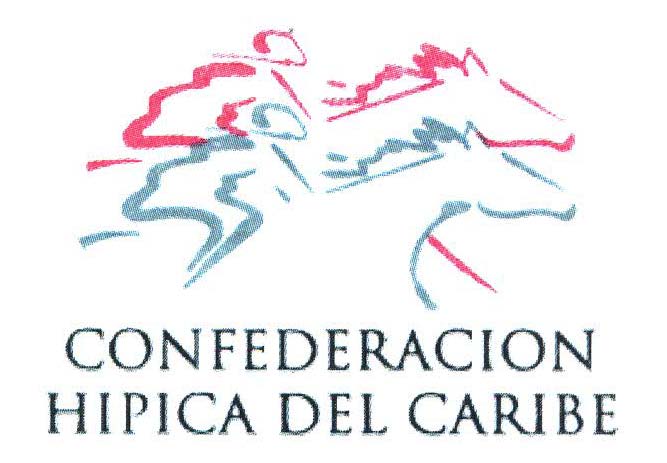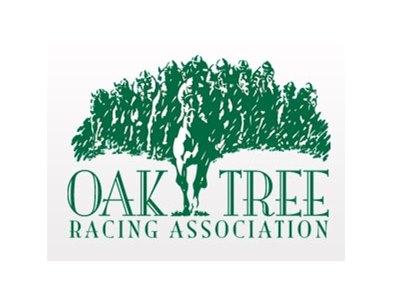These Points of Emphasis are subject to the following LEGAL PROVISIONS - Please Read Carefully
ROAP 2019-2020 POINTS OF EMPHASIS
The ROAP Points of Emphasis are established by the ROAP stewards’ advisory committee and approved by the board of directors. They are designed to provide guidelines to follow for continuing education programs. Additionally, these points of emphasis are distributed to all working stewards and racing authorities to promote awareness and uniformity.
POINT OF EMPHASIS # 1
Aftercare and Horse Welfare
- Aftercare is considered safe placement of racehorses after their careers as racehorses are completed.
- Stewards, judges and racing officials should familiarize themselves with the community-affiliated aftercare organizations at or near their racetracks. The importance of how aftercare programs interface with your live racing program cannot be underestimated. Having tangible, realistic options for transitioning horses from racing careers to second careers has been a game-changer for regulatory veterinarians, owners, and trainers alike when it comes to making sound decisions about whether or not to run “one last race.”
- It is important to provide trainers and owners with a list of options for aftercare in your racing community. Consider having a one-page document available in the racing office explaining aftercare and identifying local, regional, and national resources.
Thoroughbreds
- Thoroughbreds are capable of many successful careers after their racing days are over.
- Many breeder associations, racetracks, and horsemen’s groups have an onsite aftercare program or other aftercare network.
- Examples: Maryland’s Beyond the Wire, California’s CARMA, New York Thoroughbred Horsemen’s Association’s TAKE THE LEAD, and Parx and Pennsylvania THA’s Turning for Home.
- The 501(c)(3) nonprofit Thoroughbred Aftercare Alliance accredits, inspects, and awards grants to approved aftercare organizations to retrain, retire, and rehome Thoroughbreds using industrywide funding. The TAA:
- Is an industry-united initiative.
- Provides an intensive accrediting system and a strong funding mechanism.
- Provides funds to support accredited aftercare organizations that retire, retrain, and rehome racehorses.
- Is a shared responsibility of many Thoroughbred entities including The Jockey Club, Breeders’ Cup, Keeneland Association Inc., sales companies, horsemen’s groups, racetracks, stallion farms, trainers and others.
- Many horsemen’s groups work with TAA-accredited aftercare organizations to ensure a safe landing for the horses exiting the racetrack.
- For a list of TAA-accredited organizations please visit thoroughbredaftercare.org/taa-accredited-organizations
- If accredited organizations are not available in the area, there are other options, such as trainer sale listing services through a CANTER affiliate (canterusa.org).
- Ideally a Thoroughbred is retired sound and is easily transitioned into a show horse or pleasure riding horse. In the event the horse is injured from racing there are many TAA-accredited rehab organizations. Not every horse will become a retrained athlete in another equestrian sport, but there are several options for Thoroughbreds being trail riding horses or used in equine therapy such as veteran programs, prison programs, and programs for children with special needs.
- A euthanasia policy is a part of all accredited organizations and the guideline is outlined by the AAEP (aaep.org/horsehealth/aaep-guidelines-euthanasia-2011).
- The Jockey Club’s Sold as Retired From Racing
- If an owner desires a Thoroughbred to be considered retired from racing, The Jockey Club provides a Sold As Retired From Racing option. Sold As Retired From Racing enables the owner to retire a Thoroughbred from racing without affecting its breeding privileges.
- Within 60 days after the date of sale, the seller and purchaser of a Thoroughbred are to complete a Sold As Retired From Racing form. Both signatures must be notarized. Please refer to Rule 18 in the Principal Rules and Requirements of the American Stud Book. The Certificate of Foal Registration and four (4) color photographs (front, both sides and rear views) must also be submitted to the Registry. Upon receipt in the registry office within 60 days from the date of the sale and compliance with all requirements, the Certificate of Foal Registration will be stamped "Retired from Racing" and returned to the purchaser.
- If an attempt is made to enter a Thoroughbred at a North American racetrack, the information is communicated electronically to racing officials that the horse is Sold As Retired From Racing.
- Click here for more information on TJC’s website.
- Click here to download the Sold as Retired From Racing Form (PDF). Stewards and racing officials should have copies of this form available in the racing office.
- The Jockey Club’s Thoroughbred Connect (thoroughbredconnect.com)
- o Thoroughbred Connect is a resource for horse owners who are looking to rehome a Thoroughbred when its racing or breeding career comes to an end. Thoroughbred Connect enables you (i) to attach your contact information to a Thoroughbred you are interested in assisting with or providing aftercare for in the event the Thoroughbred is in need of such care or (ii) to request contact information for persons interested in assisting with or providing aftercare for a Thoroughbred in your possession. Thoroughbred Connect is voluntary and is provided free of charge to Interactive Registration users.
- Click here for FAQs
- For information on other aftercare resources available from The Jockey Club, please visit jockeyclub.com.
Standardbred Resources
- USTA Standardbred Safety Net
- Full Circle is a USTA program that connects two or more people with a shared concern for a horse for the purpose of assisting that horse if/when it is needed.
- Pleasure Registration - The USTA allows any member, at no charge, to convert the existing registration of a horse for which they are the listed owner to one that allows only “pleasure” use of the horse. The horse may be converted to Pleasure Registration, where the horse cannot be raced and progeny cannot be registered, or Pleasure Registration No Racing, where the horse cannot be raced, but progeny may be registered.
- Information on Re-homing Your Standardbred
- Standardbred Placing Agencies
- Standardbred Transition Alliance is an independent, non-profit group that would develop a set of minimum prerequisites and qualifications that a Standardbred rescue organization would have to satisfy in order to qualify for funding, modeled after the Thoroughbred Aftercare Alliance.
POINT OF EMPHASIS # 2
Interference Rules and Protocols; Consistency in Interference Decisions
Most jurisdictions have adopted the ARCI Model Rule for the running of the race during flat racing. In terms of interference philosophy, this is considered a Category 2 philosophy. (Information about Category 1 and Category 2 is at the end of the document.)
ARCI Model Rule 010-035 Running of the Race
E. Post to Finish
(2) Interference, Jostling or Striking
(a) A jockey shall not ride carelessly or willfully so as to permit his/her mount to interfere with, impede or intimidate any other horse in the race.
(b) No jockey shall carelessly or willfully jostle, strike or touch another jockey or another jockey's ’horse or equipment.
(c) No jockey shall unnecessarily cause his/her horse to shorten its stride so as to give the appearance of having suffered a foul.
(3) Maintaining a Straight Course
(a) When the way is clear in a race, a horse may be ridden to any part of the course, but if any horse swerves, or is ridden to either side, so as to interfere with, impede or intimidate any other horse, it is a foul.
(b) The offending horse may be disqualified, if in the opinion of the stewards, the foul altered the finish of the race, regardless of whether the foul was accidental, willful or the result of careless riding.
(c) If the stewards determine the foul was intentional, or due to careless riding, the jockey may be held responsible.
(d) In a straightaway race, every horse must maintain position as nearly as possible in the lane in which it starts. If a horse is ridden, drifts or swerves out of its lane in such a manner that it interferes with, impedes or intimidates another horse, it is a foul and may result in the disqualification of the offending horse.
(4) Disqualification
(a) When the stewards determine that a horse shall be disqualified for interference, they may place the offending horse behind such horses as in their judgment it interfered with, or they may place it last.
(b) If a horse is disqualified for a foul, any horse or horses in the same race owned or trained by the same interests, whether coupled or uncoupled may also be disqualified.
The key is determining if, as highlighted in (3)(b) above, the foul altered the finish or outcome of the race. As experienced stewards know, this can be a difficult decision to make, as each incident can have variable factors to consider. These factors include contact, intimidation, altered course, checked, pulled up, clipped heels, no room, no opening, blocked, herded, forced wide, in tight, accelerating, decelerating, continued to ride, race riding, and other terms commonly used by stewards to explain their decision-making process. Being consistent can be difficult as the factors involved in making the decision to disqualify or not are rarely the same.
Stewards, however, must try to be as consistent as possible. Being uniform in how they go about making their decisions will improve consistency. Hanging the inquiry sign as soon as the stewards know they have an incident that requires review and potentially a decision is the first step. The jockeys, horsemen and fans want to know that you are looking even if a disqualification is probably not warranted. Race replay videos should be reviewed from all possible angles. Jockeys, patrol judges, starter, and outriders should be talked to whenever pertinent. Claims of foul by jockeys and trainers obviously require the same scrutiny.
A written record in a journal or data file online of the stewards’ decisions on all inquiries and objections, whether or not there was a disqualification, will help with consistency. The transparency of producing and posting a written description of the incident and explanation of why the stewards made their decision, including referencing the applicable rule on the Internet and in the racing office and jockey room, will help jockeys, horsemen and fans better understand the decision-making process.
Reviewing the race replay video with the jockeys prior to the next race day helps the jockeys recognize all of the factors involved in the process. This also gives the jockeys the opportunity to disagree and often offer constructive comments. Giving trainers and owners the same opportunity to review the race replay videos with the stewards the next day will help with transparency. The horsemen will begin to appreciate all the factors involved in making these difficult decisions. In addition, stewards may not always be correct, and routine race replay review will help them be more effective and consistent.
Simulcasting, whereby a racing fan might see decisions on interference made by stewards at five or more tracks in a given day, will show the inconsistency between boards of stewards across jurisdictions. To try to be more consistent across the country, stewards should avail themselves of the opportunity to watch races and race replays from other tracks, especially incidents of interference and disqualifications. In addition, all ROAP accredited stewards have access to the ROAP Video Library, where the viewer is asked to make the call on a disqualification for interference. To access the video library on the ROAP website, click “Education,” “Continuing Education,” and then “Races for Review.” Further, race replay review at Stewards’ Continuing Education Seminars is an excellent way to review, discuss, and improve consistency among the tracks in that region and nationally.
Category 1 vs. Category 2 Philosophies
Internationally there are two categories of interference. These two philosophies outline methods of adjudicating interference infractions to determine the final placings in a race. Historically, North America, South America, France, and Germany have subscribed to a Category 2 philosophy and all other major racing countries subscribe to the Category 1 philosophy. At the fall 2017 IFHA meetings in Paris, (per press release) “The Executive Council of the International Federation of Horseracing Authorities (IFHA) unanimously approved a change to its International Agreement on Breeding, Racing and Wagering (IABRW), as recommended by its International Harmonisation of Raceday Rules Committee (IHRRC), to establish a model interference rule.” This model interference rule subscribes to the Category 1 philosophy. Since that time, South America, France, and Germany have committed to changing to the Category 1 philosophy, which leaves North America as the only major racing country with the Category 2 philosophy.
The IABRW model interference rule (Article 32 section 5) is below:
If, in the opinion of the Staging Authority’s relevant judicial body, a horse or its rider causes interference and finishes in front of the horse interfered with but irrespective of the incident(s) the sufferer would not have finished ahead of the horse causing the interference, the judge’s placings will remain unaltered.
If, in the opinion of the Staging Authority’s relevant judicial body, a horse or its rider causes interference and finishes in front of the horse interfered with and if not for the incident(s) the sufferer would have finished ahead of the horse causing the interference, the interferer will be placed immediately behind the sufferer.
Racing Authorities may, within their Rules, provide for the disqualification of a horse from a race in circumstances in which the Staging Authority’s relevant judicial body deems that the rider has ridden in a dangerous manner.
To summarize:
Category 1 –
If not for the interference, the offended horse would have beaten the horse causing the interference, then the offending horse shall be demoted and placed behind the offended horse. In this instance, the stewards look at the horses involved in the interference and if one would have beaten the other if not for the interference.
Category 2 –
The offending horse shall be disqualified (demoted), if in the opinion of the stewards, the foul altered the finish of the race irrespective of whether the horse that caused the interference is convincing in its placing. In other words, the offended horse was cost the opportunity for a better placing.
While ROAP has not taken a direct position on the category philosophies, ROAP continues to teach to the ARCI model rule (Category 2) and stresses the importance of consistency and uniformity in day-to-day decision making by the stewards.
POINT OF EMPHASIS # 3
Understanding Microchips and Digital Certificates
POINT OF EMPHASIS # 4
Concussion Protocols and Return to Ride
POINT OF EMPHASIS # 5
Media Relations for Stewards
The old saying, “inquiring minds need to know,” certainly holds true today in an era of social media, instant Internet access, and immediate communications. When stewards make a decision on an interference incident in a horse race, Twitter can start buzzing and the stewards’ phones’ ringing before all the horses have left the track. Having a plan on how to disseminate information is essential for every board of stewards.
The Racing Officials Accreditation Program (ROAP) has been addressing media relations for stewards since the organization was formed. There is an excellent brief overview in the “Racing Officials Resource Guide” under “Working with the Media” in the table of contents under “Miscellaneous Topics.” This guidebook was compiled by Don Clippinger, the former editor of Thoroughbred Times, and can be purchased from the ROAP office at 859-224-2702.
The annual ROAP Points of Emphasis included topics pertinent to media relations in:
- 2017 Improved Public Perception: Transparency, Consistency, and Decision Making in the Stand
- 2015 Importance of Writing, Downloading and Publishing of Steward's Rulings
- 2014 Ensure Clear and Concise Verbal and Written Explanations of Stewards’ Decisions, Daily Reports and Disseminate to the Media Through Track and/or Racing Regulatory Websites
- 2012 Media Communication Training - Training and Coordination of Media Communication with Commissions and Associations.
- 2011 Ensure that Clear and Concise Verbal and Written Explanations of Stewards' Decisions and Rulings are Given to the Media and Public Especially Regarding Claims of Foul or Inquiries Including Non Calls
These Points of Emphasis have detailed explanations and recommendations that can be accessed on the ROAP website at horseracingofficials.com/education/continuing-education/points_of_emphasis.
Any board of stewards’ media relations plan should be developed prior to the beginning of the race meet. The stewards should work with the racetrack public relations staff and racing authority/commission media spokespersons to create a plan. Information that the media relations plan should convey includes:
- Provide the role of the stewards; stewards’ names, phone numbers, and e-mails; and office hours in the racetrack media guide and condition book.
- Ensure the media (newspaper and trade magazine reporters and turf writers) who can contact the stewards for information are identified with their contact information.
- Develop a Stewards’ Daily Report that includes information required by the racing authority/commission and recommended by racetrack PR staff. This report should be produced and published the next business day in hardcopy and on the racetrack website. The report should include the weather and track conditions, abbreviated race conditions, first three finishers with final win odds in each race, scratches, program changes, rider changes, horses sent to the test barn, claims, inquiries, objections, disqualifications with explanations of the decision-making process, and any unusual circumstances during the race day. A good Stewards’ Daily Report will significantly reduce the calls and confrontations.
- Publish Stewards’ Rulings and Official Stipulations in the Racing Office and on the racetrack website.
- Designate one member of the board of stewards as a stewards’ media spokesperson. However, the stewards should always reach a consensus on all written and verbal communications prior to issuing. Whenever possible, there should be at least two and preferably all three stewards present when verbally communicating with the media whether in person or by phone.
- Each steward or a designated steward should review the horse racing media sites on a daily basis and share pertinent information for discussion by the board of stewards.
- Develop social media communications, both monitoring and posting, so that the board of stewards is aware of postings concerning their daily activities, decisions, and no decisions.
- Consider a schedule of announced meetings with racing fans, handicappers, and horsemen to discuss the role of the board of stewards, racing rules (especially race interference), Q&A, and video replay review of recent decisions in the running of the races.
- Have the board of stewards meet with the racetrack PR staff, racing authority/commission media spokesperson, and if possible, a local media training professional to discuss and practice media relations.
Once the media relations plan has been developed begin implementation. This should happen before the race meet begins, realizing that some aspects of the plan will have to be completed during the racing season.
The following are some dos and don’ts for media relations.
- Never respond with “no comment,” instead reply with something such as, “This is sensitive information and I need clearance before I can discuss. Let me get back to you as soon as possible.”
- Always respond to e-mails requesting information.
- Always return phone calls in a timely manner.
- Keep good notes of your verbal discussions on the phone or in person.
- Always give and stick to the facts. Rely on the rulebook to support your position. Never hesitate a guess or offer a personal opinion.
- There is no such thing as “off the record” when discussing an issue or situation with the media.
- There is no such thing as “keep this confidential” or “I did not say this but…” when discussing an issue or situation with the public.
- Do not be intimidated by the media as they can be your friends and a good resource to provide public information.
- Always be prepared for an interview with the media by considering and developing your answers to probable questions.
- When making a presentation to racing fans, media, horsemen, and the public in general, prepare and practice your remarks in advance. Never just “wing it.”
- When asked a difficult, sensitive or off the wall question you are not prepared to answer or should not answer, learn how to tactfully change the direction of the conversation back to an aspect of the subject at hand with which you are more familiar and more comfortable answering. Perhaps use the phrase, “Let’s look at this in a different way,” and return to your message.
- Relax during a media interview or presentation. The better prepared you are, the more confident you will be in your answers. This confidence will be positively perceived with the audience even though they may not agree with your opinion.
- When you receive a media request, make sure you know from whom the inquiry is coming — name and company. What is the incident in question — who, what, where, when, why? This goes equally for inquiries from the public or the participants.
- Never allow yourself to become visibly angry.
Good media relations are essential for the promotion of horse racing. Realize that the board of stewards has the opportunity to educate the media and racing fans as to the rules and reasons that affect your decision-making process. Let them know up front that your primary concerns are the safety of the participants, both the horses and the horsemen and women, and the integrity of the sport and business of horse racing.
